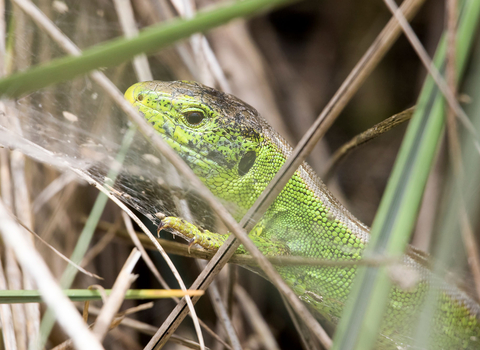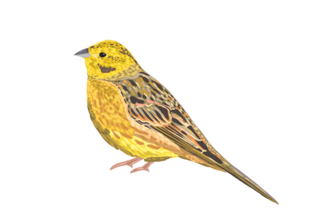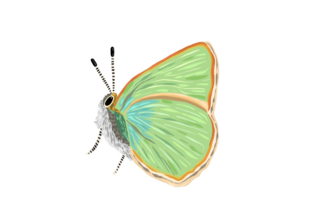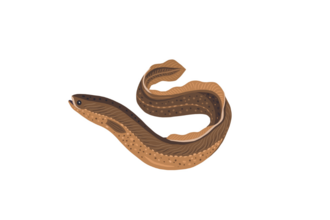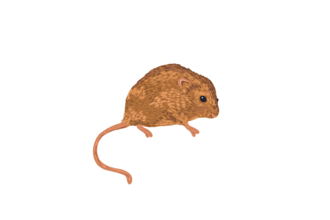Arguably the UK’s most attractive reptilian – and there’s tough competition from the five other native species – male Sand Lizards are the gaudy, green-flanked micro-dragons of our heathland habitats.

Bea Baranowska Illustration
Up to 20cm in length, these animals are larger and more handsomely marked than the otherwise similar Common Lizard. They are also far scarcer, clinging on in a handful of UK locations where they enjoy dry conditions with plenty of bare, sandy patches of ground on which to soak up the sun, where they can deposit their eggs in early summer.
The bright Kawasaki motorbike green flanks and mottled brown backs of males in breeding condition make them easy to identify. Females are more subdued in tones of brown and grey – but all female Sand Lizards have a tell-tale stocky build and slightly bolder “eye spot” markings (dark brown blotches with white-cream centres). Find out more about the Sand Lizard here.
Why they matter
We’re lucky that Surrey harbours suitable conditions for these reptiles, and the Trust has a special responsibility to maintain them here – not least because when Sand Lizards thrive, many other heathland specialists - from rare bees and spiders to Nightjars and Woodlarks - do too.
The sad decline of the Sand Lizard, alongside many other species, mirrors the loss of 80 per cent of UK heathland habitats over the last 150 years. With only isolated sites remaining, the security and genetic diversity of many specialist heathland species is further threatened. Given the beauty, biodiversity and recreational value of these magical places, preserving and re-connecting them must be a priority for conservationists.
How we're helping
Protecting and maintaining our heathland habitats for wildlife has always been a fundamental priority for the Trust. Our staff and volunteers have worked hard to maintain the right balance between areas of scrub, wetland, bare patches, and gorse and heather to ensure that Sand Lizards and other wildlife can feed, breed and find shelter. Our conservation grazing efforts have been instrumental in this, given that heathlands were historically sustained by the activities of large grazing animals both wild and domestic.
In light of the recent effects of climate change, which are just an indicator of what is to come, protecting heathlands and their reptile populations demands more effective mitigation against wildfires. We need to create more strips of bare ground and wetland to act as firebreaks, and we must continue to raise the level of public awareness so that people don’t inadvertently start fires. It’s not easy to pay for the increased man hours, machine hire and on-site research that will enable us to do this properly.
But even all this won’t be enough. To maintain genetic diversity and maximise opportunities for Sand Lizard populations to move, breed and eventually grow, Surrey Wildlife Trust is on a long-term mission to join up our fragmented heathland territories. To do this, we need to purchase or safeguard more land, co-operate more closely with other landowners and get better at identifying and mapping suitable habitats across the county, including through our Space4Nature project.
Other species in need
The decline of species like the Nightingale, Yellowhammer, and European Eel is not just a concern – it’s a call to action. These iconic creatures, along with others like the Harvest Mouse and hairstreak butterflies, need our help to thrive once again in their natural habitats. To find out more about each of these species and how we're helping them, click below.

